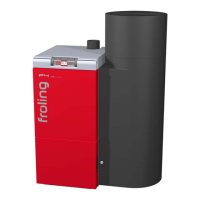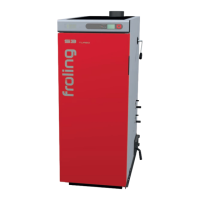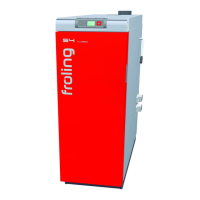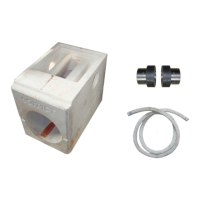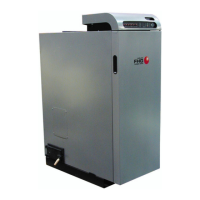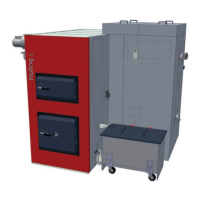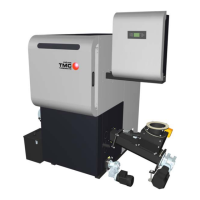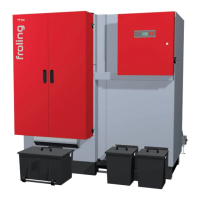Fröling Heizkessel- und Behälterbau Ges.m.b.H, Industriestrasse 12, A-4710 Grieskirchen Page 43
Tel +43 (0) 7248 606-0 Fax +43 (0) 7248 606-600 info@froeling.com www.froeling.com B0430207
Creosote-Formation and Need for Removal-When wood is burned
slowly, it produces tar and other organic vapors, which combine with
expelled moisture to form creosote. The creosote vapors condense in
the relatively cool chimney flue of a slow-burning fire. As a result,
creosote residue accumulates on the flue lining. When ignited, this
creosote makes an extremely hot fire. The chimney and chimney
connector should be inspected at least twice monthly during the
heating season to determine if a creosote build-up has occurred. If
creosote has accumulated it should be removed to reduce the risk of a
chimney fire.
5.2.2 Yearly check
Clean the flue gas collection chamber and the heat exchanger
Remove the insulating cover
Turn the screw-handles on the cleaning cover anti-clockwise to
loosen them
Remove the cleaning cover
Clean the flue gas collection chamber and the opening to the
induced draught fan with a brush
Remove any soot which has fallen in
We recommend that you use an ash vacuum
Remove the internal heat exchanger cover
Clean the flues and the combustion chambers beneath them
with a cleaning brush
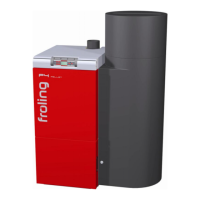
